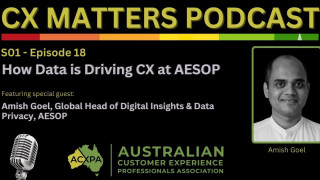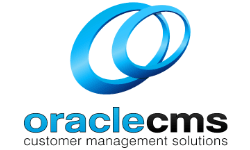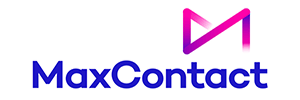True Calls Per Hour (TCPH) and Calls Per Hour (CPH)
The TCPH and CPH Metric in Call Centres: Pros and Cons
In the high-intensity world of call centres, metrics play a crucial role in assessing performance and driving productivity.
One such metric that holds significant importance is the True Calls Per Hour (TCPH) and Calls Per Hour (CPH) metric.
With one of the primary tasks of call centre agents to handle incoming calls, call centre managers are always looking for ways to identify the strong performers and those that need some extra coaching.
For many call centres, there has always been the assumption that the agent that takes the most calls is the best agent.
In fact, many call centres have rewarded agents based entirely on the number of calls processed.
But, of course, the logic of the agent who handles the most calls being the best is inherently flawed.
Because the number of calls tells us nothing about the quality of the calls.
In this glossary term definition, we will explore the True Calls Per Hour and Calls Per Hour metric used in call centres, highlighting their pros and cons.
By understanding both sides of the equation, call centre professionals can make informed decisions about whether utilising this metric in their contact centre is going to drive the right performance.
What is the calculation for calls per hour?
The formula to calculate the calls per hour metric in a call centre is pretty basic:
Calls Taken / Signed in Time = Calls Per Hour
So for example, if an agent answered 30 calls, and was signed in for a total time of 2 hours
30/2 = 15 Calls per Hour
Is the True Calls Per Hour Metric the same as the Calls Per Hour Metric?
No!
The True Calls Per Hour (TCPH) metric goes beyond the traditional Calls Per Hour metric by considering various factors that impact call centre efficiency and that typically can’t be controlled by an agent.
TCPH accounts for non-call activities such as after-call work (ACW), administrative tasks, and system downtimes, providing a more accurate reflection of an agent’s true productivity.
By incorporating these elements, TCPH provides a deeper insight into call centre operations and assists in making informed decisions for process optimisation.
What is the calculation for True Calls per Hour (TCPH)?
The TCPH Metric provides more of a level playing field when it comes to measuring the productivity of a call centre agent, as it removes the influences outside of an agent’s control by using the occupancy metric.
The True Calls Per Hour formula is:
(Number of calls) / (Occupancy)
As an example, we have one agent who handled 22 calls over their entire shift with an Occupancy rate of 87%
22 / 0.87 (87%) = 25.3 TCPH
An Example of using the True Calls per Hour Metric
To help you get your head around the True Calls per Hour metric, consider this example:
Agent A works the day shift, and it’s extremely busy for most of the day. Agent B works the night shift, where it’s a lot quieter.
It would be unfair to measure agents on the number of calls they each take, wouldn’t it?
But if we use the True Calls per Hour Metric, it will even up the playing field.
| Calls Handled | Occupancy | True Calls per Hour | |
| Agent One | 22 | 87% | 25.3 |
| Agent Two | 13 | 46% | 28.3 |
Looking purely at Calls per Hour handles, Agent One appears to be far more productive.
But using the True Calls per Hour formula, it is clear that Agent Two is actually more productive.
So is True Calls Per Hour a good metric to use?
Just when you thought you found a solution…
But the answer is still NO!
Firstly, I recommend you learn a bit more about Call Centre Occupancy as that has its own set of issues.
But if I put that to one side for now, the biggest issue with using the Calls per Hour Metric or the True Calls per Hour Metric is that neither of them tell you anything about what happened during the call.
You know, quality, compliance etc.
There is absolutely no value in having an agent who handles 100 calls an hour and they are terrible on every single one!
But if you seek to compare the TCPH rate for different times of the day, for different shifts, for different cities or countries or across a time period – the True Calls per Hour calculation can help.
Benefits of using the True Calls Per Hour (TCPH) Metric
None.
Just kidding.
As long as you are using it in conjunction with other metrics it can be a useful metric.
Benefits of using the TCPH Metric include:
Enhanced Accuracy
TCPH offers a more accurate representation of an agent’s productivity by accounting for non-call activities.
Including after-call work and other tasks in the metric ensures that the time spent on essential activities is considered, leading to a more precise measurement of agent efficiency.
Call Centre Managers can make data-driven decisions based on a comprehensive understanding of agent performance.
Improved Resource Allocation
With TCPH, call centre managers can make better-informed decisions regarding resource allocation.
By considering non-call activities, and ensuring more productive agents are scheduled during busy times, call centre managers can maximise efficiencies during peak hours (suggest learning more about Erlang Formulas if you really want to step things up!)
This leads to optimised staffing levels, reduced wait times, and improved service quality.
Setting Realistic Targets
The TCPH metric aids in setting realistic performance targets for call centre agents by more fairly comparing productivity performance with other agents.
This ensures that agents are not pressured to achieve unrealistic or unfair call volume targets, leading to a more balanced approach that prioritises both productivity and quality service (as long as you are measuring BOTH).
It can be a valuable metric for the Call Centre Team Leader to help their agents become more productive by comparing agents to their peers, and then identifying areas they can assist in improving the TCPH rate.
For tips on that, refer to the Average Handling Time metric.
Why you need to stop using the Calls Per Hour Metric
If you haven’t worked that out already, and still need some convincing here are some key reasons why you should not be using either the Calls Per Hour (CPH) or True Calls Per Hour (TCPH) Metric in the call centre.
Balancing Quantity and Quality
Like any contact centre metric, CPH or TCPH must be used in conjunction with other performance indicators to strike a balance between quantity and quality.
Focusing solely on TCPH may inadvertently prioritise call volume over delivering exceptional customer experiences.
Contact Centre Managers must ensure that agents prioritise both efficiency and quality service to avoid sacrificing customer satisfaction for the sake of achieving high TCPH scores, as in doing so, you will be driving the wrong behaviours in your contact centre.
Contact Centre Morale and Employee Wellbeing
Excessive emphasis on the number of calls handles or TCPH could lead to increased pressure on agents, potentially affecting their morale and well-being.
Setting unrealistic targets may cause stress and burnout, negatively impacting job satisfaction and, ultimately, customer service.
Careful consideration must always be given to strike a balance between productivity goals and agents’ work-life balance and well-being.
Rewarding agents for the wrong behaviours can also be detrimental to your contact centre.
Conclusion
The True Calls Per Hour (TCPH) metric represents a valuable evolution of the traditional calls per hour metric, providing call centre professionals with enhanced insights into agent productivity and call centre efficiency and it can be a useful metric for Team Leaders to use in coaching frontline agents.
However, using TCPH or CPH as a metric and just focusing on quantity, without a focus on quality, is just asking for trouble.
The focus you want for your frontline staff is to focus on delivering quality conversations, not counting the number of calls they have taken.
So yes, it’s a metric to keep an eye on, but please don’t just use it in isolation.
Recommended further reading:
Upcoming ACXPA Member Bites Sessions
Short, sharp interviews and presentations on specific topics to fast-track your knowledge!
The ACXPA Member Bites are only available to ACXPA Members!
ACXPA Members can watch all the ACXPA Member Bites at any time in their Video Library. Discover which membership is right for you >

IVR Best Practice
Over 90% of contact centres are using an IVR (Press 1 for this, press 2 for that), and we've encountered many contact centres with over four layers of options for customers to select from. In this session, Nadine will be sharing some best practice tips on IVR design for 2024.
Presented by Nadine Power, Client Success Manager, VERSA Connects (and ACXPA National Advisory Board Member)
More sessions announced soon!
(If you're interested in speaking at one of our events, click here to learn more >)
- About the Author
- Latest Articles
After spending over 30 years working in contact centres and CX, one thing I’ve learnt is there is always something more to learn!
I’m thrilled to be the inaugural CEO of ACXPA, and together with the rest of the team, we’re focused on helping Australian businesses deliver efficient and effective customer experiences via phone, digital and in-person by empowering their employees with the skills, industry insights and professional support networks they need to succeed.



















